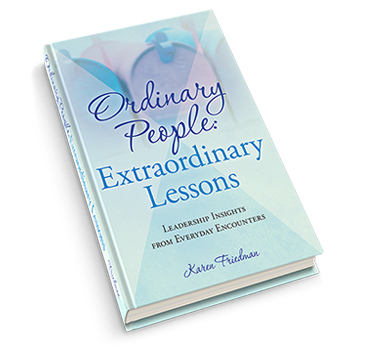Apple reported that a record number of more than 2 billion apps were downloaded in December. At an average cost of $1.50, their reported $7 billion investment to application developers is clearly profitable.
What is it about apps that make so many so popular? The good ones are simple, easy to use and make learning fun. Most people can also figure out how to use them without relying on a manual or help desk.
This is what learning should be about. Think back to some of your favorite teachers. You probably don’t remember how smart they were, but you might remember how they made information come to life. Today, perhaps decades later, you’ll also remember the energy in that classroom and how that teacher engaged you.
As we become more and more technology savvy, the virtual business world becomes easier to navigate. Meetings, trainings and presentations previously required to be in-person are now being conducted via Skype, handheld mobile devices and sophisticated video conferencing allowing us to feel that we are actually present in a room that might be thousands of miles away. The constantly evolving trends require so many more of us to become master communicators if we hope to succeed in the global workplace. So like popular apps, we must strive to create a more interactive engaging learning experience than ever before.
In a recent LinkedIn discussion group, someone asked why PowerPoint kills meetings. Most of the responses focused on how to better use slides or tried to sell the group on switching to other programs. PowerPoint doesn’t kill meetings. Presenters kill meetings. PowerPoint, Prezi or whatever you prefer is simply a tool. The problem is how that tool is used. No matter how much fancy animation or graphics you include, there is no substitute for you! Slide or no slide, your job is to maximize understanding and put information into context.
Granted, we all have different learning styles from visual, auditory and needing to physically conduct the task. But regardless of how we learn, no one wants to be talked at. Like a great app does, people want to be involved in the experience. No one knows that better than school-aged children. On the New York Times Learning Blog, an article titled ‘Do Apps Help You or Just Waste Your Time?” asked students if apps were useful to them. When they said yes, as most did, the words that were continually repeated were “helpful,” “makes my life easier” and “fun.” It doesn’t get more straightforward than that. If you want to turn a meeting, presentations, training session or speech into a learning experience, then strive to teach by making it fun, engaging and focusing on information that will make their lives easier.
When I share this approach with people I work with, some object, fearing they will not be perceived as professional. Quite the contrary. Brain research suggests that fun is not only beneficial to learning but, by many reports, required for authentic learning and long-term memory. Here are few principles you can implement to increase attention and retention:
• Have a Dialogue, Not a Monologue — Truman Capote said, “A conversation is a dialogue, not a monologue. That’s why there are so few good conversations.” Instead of droning on about yourself or your service, make it about them. Speak to their concerns, ideas, challenges and share information that address common goals.
• Look For Cues — Too frequently, we are so focused on our own agenda that we miss important cues. For example, if a prospect starts talking about an issue that isn’t on your itinerary, be flexible even if it means straying from your plan. Clearly it’s important to them. Look for opportunities to help them understand how your product might address their concerns.
• Active Involvement — Getting people actively involved in your message is the most effective way to keep their attention. This may include posing challenging questions, conducting quick exercises, showing pertinent videos and asking for responses by show of hands or quick shout outs.
• Provide Gentle Guidance — There is a difference between telling someone what to do and offering a suggestion. A great example of this is the interactive blackjack app I downloaded on my iPad. While having fun trying to outsmart the electronic dealer, I wasn’t always sure what move to make. After all, I don’t like losing money even if it’s not real. So I hit the advice button which suggested options. On more than one occasion, the suggestions led to a winning hand.
Not that I’m a big blackjack player but I have been known to visit a casino table once in a while. Though sadly my app can’t join me at the table the next time I stop by, the easy-to-use, fun app that provided simple tips will likely prove valuable the next time real money is at stake.








Leave a Reply
You must be logged in to post a comment.